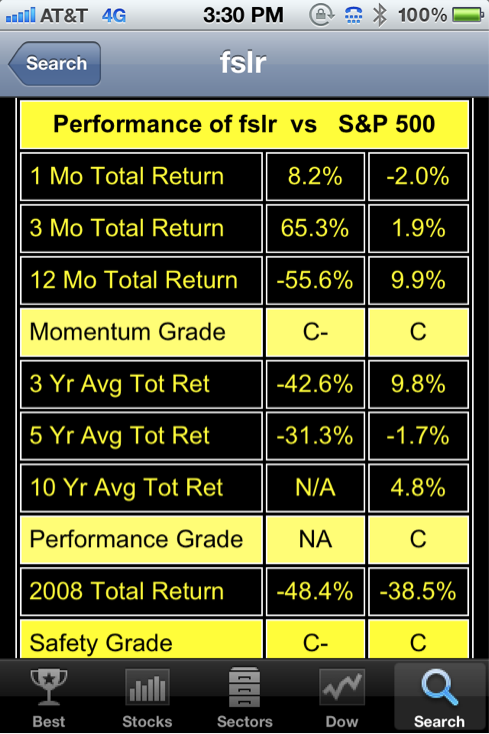
As one solar company after another goes out of business, here is what investors do not know and promoters will not tell you: Solar panels do not work that well.
Sometimes not at all. But for several years, most solar systems, big and small, were so heavily subsidized, they were practically free. So lots of people did not really care.
Not enough to check the output of their systems. The few who did often had a big surprise.

That was the first shock.
The second was realizing that a large solar array was not just one system, but thousands. Each panel a mini-power plant. And the only way to figure out if the individual panels were working was to test each one.
There go your solar savings.
The gang at Google figured out that the farmer next door had plowed a field, kicking up the dirt, knocking down its power. Solar panels have to be cleaned, sometimes often.
And the place where they need the most cleaning is where solar panels work the best: The desert. But that is where water is scarce and expensive.
There go your solar savings.
Lousy panels are No. 2. Remember Solyndra? Before its well-publicized collapse, Solyndra was well known for its tube-shaped products that were supposed to collect solar power directly from above, and indirectly, reflected from below.
They found out the hard way in Livermore, Calif. There a movie theater got a lot of attention for installing a roof top solar array — first of its kind when it was installed in 2009. A year later, technicians found out the system was producing 25% less power than projected.
The movie theater had no idea. I’m not sure they ever found out.
The only laboratory that ever tested the actual performance of Solyndra products figured it out. But it was in Germany and did not receive much attention. Said one energy web site:
the report claims the Solyndra module’s shadow blocked most if not all of the sunlight before hitting the reflector foil installed below the module, allowing only a small portion of reflected sunlight to hit the backside of the module.
This is the same place where 100 reporters covered President Obama’s visit there in 2010, and not one took a moment to figure out why Solyndra’s auditors said the company was “not a going concern.”
Like First Solar’s panels, how would you know? You don’t.
No. 3 is this: The darn things don’t work — at all. In San Diego, the local Space theater and museum asked some people to check its panels. As usual, they were installed with lots of fanfare.
But one year later, they were surprised that squirrels and trees had reduced their solar output to zero.
A public utility in a southern state had the same experience. A solar company wanted to field test a new energy product, and the engineers at the utility said they could test it on their system.
Soon, 10 engineers were tromping around the roof of the utility’s headquarters, looking for best place to hook up their device.
“These panels don’t work,” said one of the engineers with the new product. “There is no power coming out of these panels.”
Engineers for the utility said “Your instruments are wrong. We are sure the panels work.”
So the utility’s engineers checked with their instruments.
Sure enough: Nothing.
These stories go on and on and on. They don’t work but no one cares because most people put them up for the publicity and marketing. Not energy. The movie theater Web site brags it has: “the second largest solar power system on the roof of a movie theatre anywhere in the world!”
Solar promoters consider themselves part of a political movement to save the planet. They do not tolerate naysayers.
That is why it is still so easy to find stories that say the non-performance of solar equipment “really looks like a non-story.” That is what one analyst said after First Solar’s stock recently took a 10% hit in one day after the company revealed problems with its products.
Here’s a bonus reason No. 4: Shade. A shadow on a solar array not only knocks out power to that panel, it also shuts down a wide area of panels around it.
Listen to the National Renewable Energy Laboratories: “the reduction in power from shading half of one cell is equivalent to removing a cell active area 36 times the shadow’s actual size.”
Do your own test: Ask your neighbors if they know how shadows hurt solar panels. Most do not.
Some companies install monitors on each panel. But monitor makers find that the very existence of their product is an admission of problems in that industry. And that is the last thing the True Believers want anyone to hear about.
Especially investors.
That is why I shorted First Solar at $121 in March of 2011 — and said so on my radio show and in my newsletter.
And that is why investors should stay away from betting on their resurgence.
This article is commentary by an independent contributor, separate from TheStreet’s regular news coverage.
>To order reprints of this article, click here: Reprints
